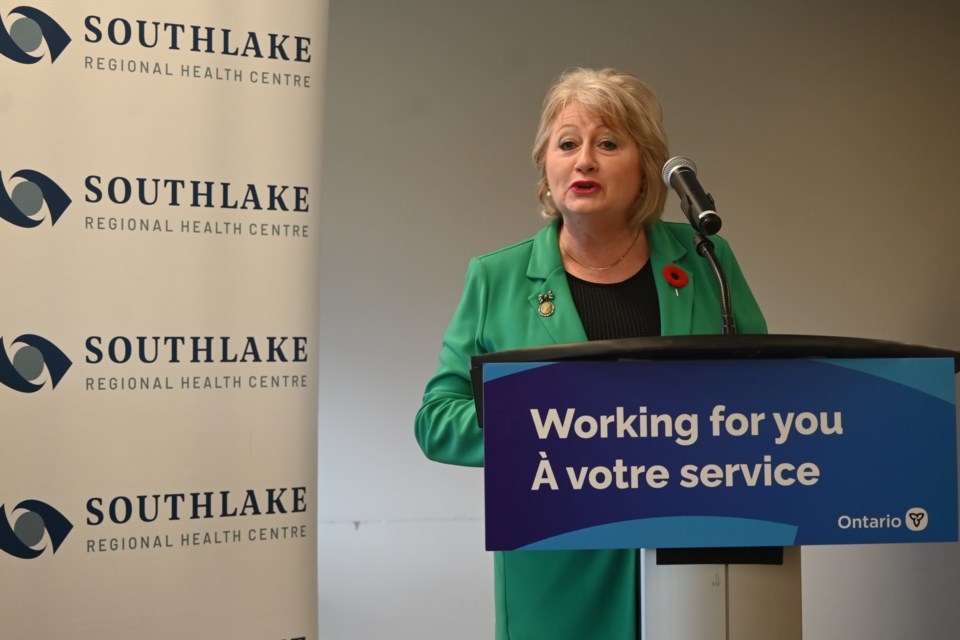The Ontario government is giving Southlake Regional Health Centre a funding boost to help it address capacity and space issues in its emergency department.
Newmarket-Aurora MPP Dawn Gallagher Murphy attended the hospital today to announce more than $17 million in funding this year to increase capacity, reduce emergency wait times and support “critical upgrades.”
Gallagher-Murphy said the funding will help ensure patients can connect to high-quality care.
“Whether you’re a parent sitting with your child in the emergency department, or if you have a loved one recovering from surgery, you deserve to be able to connect to care close to home,” Gallagher-Murphy said.
The hospital has had challenges with capacity and physical space in its emergency department, according to the director of emergency and mental health Stella Johnson.
She said the hospital has seen a significant increase in patients' length of stay, with up to 40 individuals waiting for the care at any given time in a different area before getting to one of 25 stretcher spaces in the emergency department.
“What today’s funding can help with is creating additional capacity,” she said, describing the emergency department as very small. “When someone’s waiting upwards of 24 hours to get to that next care setting, it does create … the congestion that we are hearing and experiencing every day.”
A report released earlier this year found Southlake was faring well compared to provincial averages in terms of the first assessment by a doctor in emergency departments, at about 36 minutes. The Newmarket hospital has used pre-triage nurses to help assess patients and fast-track more urgent cases.
However, although time spent in emergency rooms is lower for those not admitted to the hospital — 2.2 hours on average for low-urgency patients and 3.4 for high-urgency — the hospital averages 18.9 hours for patients in emergency rooms who require hospital admittance.
Johnson said the hospital has a quality improvement plan to reduce time to inpatient bed metrics.
The funding is broken down into $11 million to support the continued operation of 41 acute, surgical, transitional and acute care beds for children and youth.
An extra $3.8 million will go toward Southlake using “innovative solutions” to help people receive care faster. Another $3.1 million through the provincial Health Infrastructure Renewal Fund will help the hospital complete upgrades.
“Health care is a team effort,” Southlake board chair Marilee Harris said, adding that government support and Gallagher-Murphy’s advocacy on Southlake’s behalf “is an essential component of helping the professionals at Southlake deliver the care.”
“I know it will make a big difference for our community,” Gallagher-Murphy said.
Southlake seeks more than 116,000 patients in its emergency department each year, with an average of more than 320 unique patients each day.



